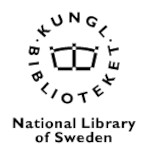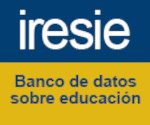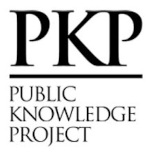The Greenian Analytical Framework: A Field of Forces from the Intrapsychic to the Intersubjective
DOI:
https://doi.org/10.5020/23590777.rs.v24i1.e12651Keywords:
psychoanalysis, analytical framework, clinical thinking, objectifying function, André GreenAbstract
The article proposes to deepen the conception of the analytical framework according to André Green, focusing on the originality of the author's contributions to the topic. We introduce the idea of the analytical framework as a privileged conceptual operator for the articulation of
central theoretical formulations of Green&'s work, such as framing structure, internal framework of the analyst, clinical thinking, double transference, metapsychology of limits, figures of thirdness and objectizing and de-objectizing functions. We seek to demonstrate that the notion of frame inevitably condenses the intrapsychic and intersubjective aspects that are at play in the analytical relationship, contemplating the drive-object dynamic. From the understanding of the fundamental conditions for the installation of the analytical framework and the active matrix, the psychoanalyst can modify the variable elements of the framework and opt for the clinical device most adapted to the patient's psychic functioning. In opposition to objectification, which allows the construction of the frame by the analytical duo, we identify that the action of destructiveness often manifests itself through attacks directed at the frame itself, as in the central phobic position and the psychic desertification syndrome, two characteristic transference frames of the limit states. In this way, we consider clinical theory and metapsychology to be inseparable in understanding the circumstances that favor or harm the good functioning of the analytical framework, concluding that André Greens´`thought is a relevant reference in this investigation.
Downloads
References
Bleger, J. (1966). Simbiosis y Ambiguedad: Estudio psicoanalítico. Editorial Paidós. http://www.fepal.org/images/2002REVISTA/bleger.pdf
Candi, T. (2010). O duplo limite: O aparelho psíquico de André Green. Editora Escuta.
Canelas, J. M., Neto. (2013). O legado de um psicanalista engajado. Percurso 49/50(25), 162-164. https://revistapercurso.com.br/index.php?apg=artigo_view&ida=1020&ori=edicao&id_edicao=49
Chervet, B., & Donnet, J.-L. (2014). Pourquoi la règle ? Méthode analytique et règle fondamentale. Presses Universitaires de France.
Chervet, E. (2017). Patient et interprète. Le domaine intermédiaire. Bulletin de la Société Psychanalytique de Paris, 81(5), 1301-1365.
Coelho, N. Jr. (2015). As origens da terceiridade entre Green e Ogden. In T. Candi (Org.), Diálogos psicanalíticos contemporâneos. O representável e o irrepresentável em André Green e Thomas H. Ogden (pp. 235-272). Editora Escuta.
Delourmel, C. (2005). Quelques figures de la tierceité dans l’œuvre d’André Green. In F. Richard, & F. Urribarri (Orgs.), Autour de l’oeuvre d’André Green (pp. 327-341). Presses Universitaires de France.
Donnet, J.-L., & Green, A. (1973). L’enfant de ça. Éditions de Minuit.
Figueiredo, L. C., & Coelho, N. E., Jr. (2018). Adoecimentos psíquicos e estratégias de cura. Matrizes e modelos em psicanálise. Blucher.
Franco, W., & Kupermann, D. (2020). Um lugar para pensar: uma hipótese sobre o enquadre interno do psicanalista. Jornal de psicanálise. 53(99). 57 – 72.
Freud, S. (2014). Compêndio de psicanálise e outros escritos inacabados (pp. 11-195). Autêntica Editora. (Trabalho original publicado em 1940).
Freud, S. (2017). Fundamentos da clínica psicanalítica (pp. 121-147). Autêntica Editora. (Trabalho original publicado em 1913).
Green, A. (1983). Narcissisme de vie, narcissisme de mort. Les Éditions de Minuit.
Green, A. (1990). La folie privée. Folio Essais.
Green, A. (1993). Le travail du négatif. Éditions de Minuit.
Green, A. (1994). Un psychanalyste engagé. Conversations avec Manuel Macias. Pluriel.
Green, A. (1995). Propédeutique. La Métapsychologie révisitée. Champ Vallon.
Green, A. (1998). Genèse et situation des états-limites. In André, J. (Org.), Les états limites (pp. 23-68). Presses Universitaires de France.
Green, A. (2002) La pensée clinique. Odile Jacob.
Green, A. (2005). Idées directrices pour une psychanalyse contemporaine. Presses Universitaires de France.
Green, A. (2006). Associations (presque) libres d’un psychanalyste. Entretiens avec Maurice Corcos. Éditions Albin Michel.
Green, A. (2007). Préface. L’ancien et le nouveau. In Roussillon, R. Logiques et archéologiques du cadre psychanalytique (pp. 7-12). Presses Universitaires de France.
Green, A. (2010). Illusions et désillusions du travail psychanalytique. Odile Jacob.
Green, A. (2012). La clinique psychanalytique contemporaine. Ithaque.
Green, A. (2013). Penser la psychanalyse avec Bion, Lacan, Winnicott, Laplanche, Aulagnier, Anzieu, Rosolato. Ithaque.
Green, A. (2017). A Loucura Privada: Psicanálise de Casos-limite. Editora Escuta.
Green, A. (2023). Por que as pulsões de destruição ou de morte? Blucher.
Green, A. & Urribarri, F. (2019). Do Pensamento Clínico ao Paradigma Contemporâneo: Diálogos. Blucher.
Kupermann, D. (2019). Por que Ferenczi? Zagodoni.
Minerbo, M. (2016). Diálogos sobre a clínica psicanalítica. Blucher.
Pirlot, G. (2015). André Green. Dialogues et cadre psychanalytiques. Presses Universitaires de France.
Roussillon, R. (2009). Clinique de la psychanalyse (Cap. 1, pp. 19-35). Presses Universitaires de France.
Urribarri, F., & Green, A. (2013). Dialoguer avec André Green. La psychanalyse contemporaine, chemin faisant. Les Editions Ithaque.
Urribarri, F. (2017). Après Lacan : Le retour à la clinique. Ithaque.
Downloads
Published
How to Cite
Issue
Section
License
Copyright (c) 2024 Revista Subjetividades

This work is licensed under a Creative Commons Attribution-NonCommercial-ShareAlike 4.0 International License.
Para autores: Cada manuscrito deverá ser acompanhado de uma “Carta de submissão” assinada, onde os autores deverão declarar que o trabalho é original e inédito, se responsabilizarão pelos aspectos éticos do trabalho, assim como por sua autoria, assegurando que o material não está tramitando ou foi enviado a outro periódico ou qualquer outro tipo de publicação.
Quando da aprovação do texto, os autores mantêm os direitos autorais do trabalho e concedem à Revista Subjetividades o direito de primeira publicação do trabalho sob uma licença Creative Commons de Atribuição (CC-BY), a qual permite que o trabalho seja compartilhado e adaptado com o reconhecimento da autoria e publicação inicial na Revista Subjetividades.
Os autores têm a possibilidade de firmar acordos contratuais adicionais e separados para a distribuição não exclusiva da versão publicada na Revista Subjetividades (por exemplo, publicá-la em um repositório institucional ou publicá-la em um livro), com o reconhecimento de sua publicação inicial na Revista Subjetividades.
Os autores concedem, ainda, à Revista Subjetividades uma licença não exclusiva para usar o trabalho da seguinte maneira: (1) vender e/ou distribuir o trabalho em cópias impressas ou em formato eletrônico; (2) distribuir partes ou o trabalho como um todo com o objetivo de promover a revista por meio da internet e outras mídias digitais e; (3) gravar e reproduzir o trabalho em qualquer formato, incluindo mídia digital.
Para leitores: Todo o conteúdo da Revista Subjetividades está registrado sob uma licença Creative Commons Atribuição (CC-BY) que permite compartilhar (copiar e redistribuir o material em qualquer suporte ou formato) e adaptar (remixar, transformar e criar a partir do material para qualquer fim) seu conteúdo, desde que seja reconhecida a autoria do trabalho e que esse foi originalmente publicado na Revista Subjetividades.





















